Welding and Oxyfuel Cutting: What Colors are the Gas Hoses?
Last Updated on
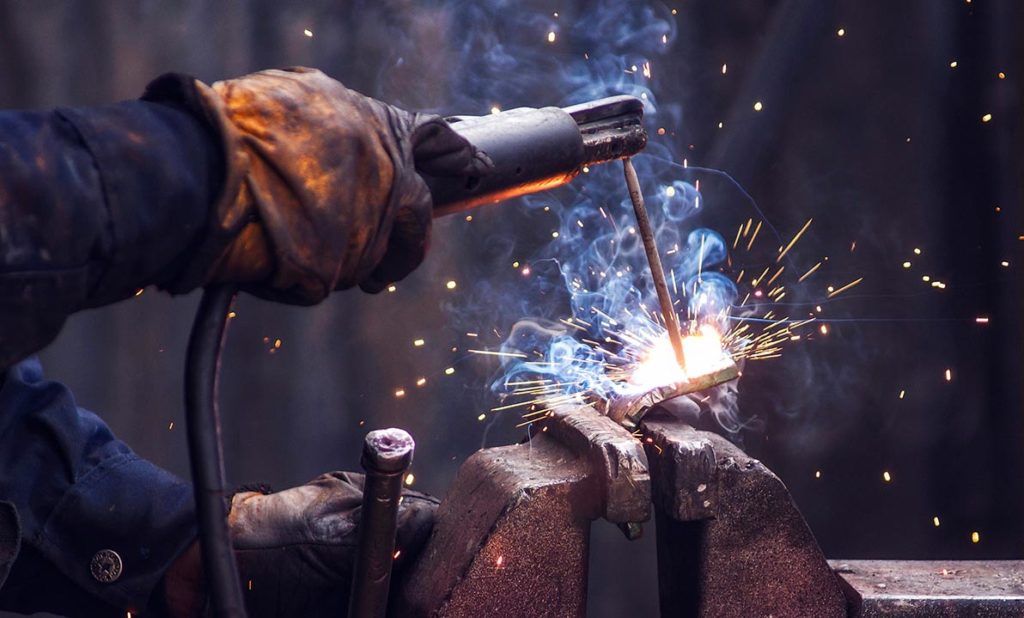
If you’ve spent any time in a fab shop or a job site where there is welding, cutting, or brazing, you have likely seen a plethora of hoses of different colors. Hoses can carry water, compressed air, and gases. As it applies to welding, there are some important things to know about hoses and ways to identify them. Using the right hoses for the right applications is essential for good fabrication protocol. It’s also important to know how to recognize when a hose is not fit for use and how to make minor repairs to them.
You cannot determine the purpose of a hose by its color alone. You have to take into consideration whether the hose will be used for setting up a cutting torch, welding machine, or air tool. These are just a few examples. Let’s take a closer look.
Gas Hoses
Welding
When it comes to actually using a welding machine, you are not going to be using oxygen aside from specific MIG spray applications. Even in a case such as this, oxygen is only going to constitute a small percentage of the overall shielding gas mix. But what you will see being used is usually carbon dioxide, argon, helium, or a combination. Oxygen should never be used as the sole shielding gas when welding. This will cause all sorts of problems.
It is important to know this because very often hoses for shielding gas are green. At the same time, oxygen hoses that are used for other applications are also green. This can cause some confusion. But while shielding gas hoses for welding machines are often green, they can also be black or white. There is less of a hard and fast rule for welding machines.
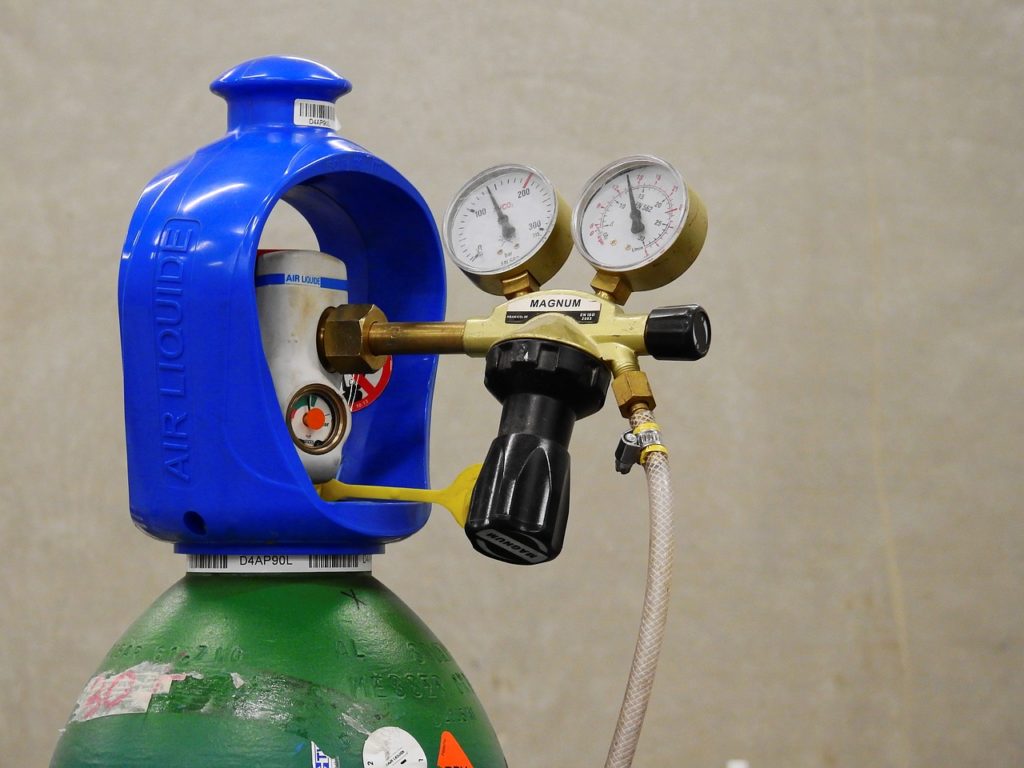
Oxyfuel Setup
In order to use a cutting torch, which for most fabricators is considered essential, you need to use oxygen combined with another fuel in order to create an oxidizing cutting flame. In this case, the oxygen hose is invariably green, and the fuel hose is always red. The types of fuel used vary but the most commonly used are propane and acetylene. Natural gas, methylacetylene-propadiene (MAPP), and propylene are also used.
In order to prevent accidental confusion between the two hoses on the manifold end or on the cutting torch end, manufacturers intentionally create them to be unthreadable. This means that all fuel hoses have left-hand threads with a notched nut, and the oxygen hose has right-hand threads without a notch.
The amount of gas and oxygen that come out of their respective cylinders is controlled by regulators. These are valves that help manage how much oxygen or fuel is allowed to come out at once. It controls the PSIG (Pound-force per square inch). Regulators are crucial because for a gas like acetylene, which is extremely volatile, an excess of pressure can mean life or death. This is why gas cylinders should always be locked in a secure position like on a cylinder cart.
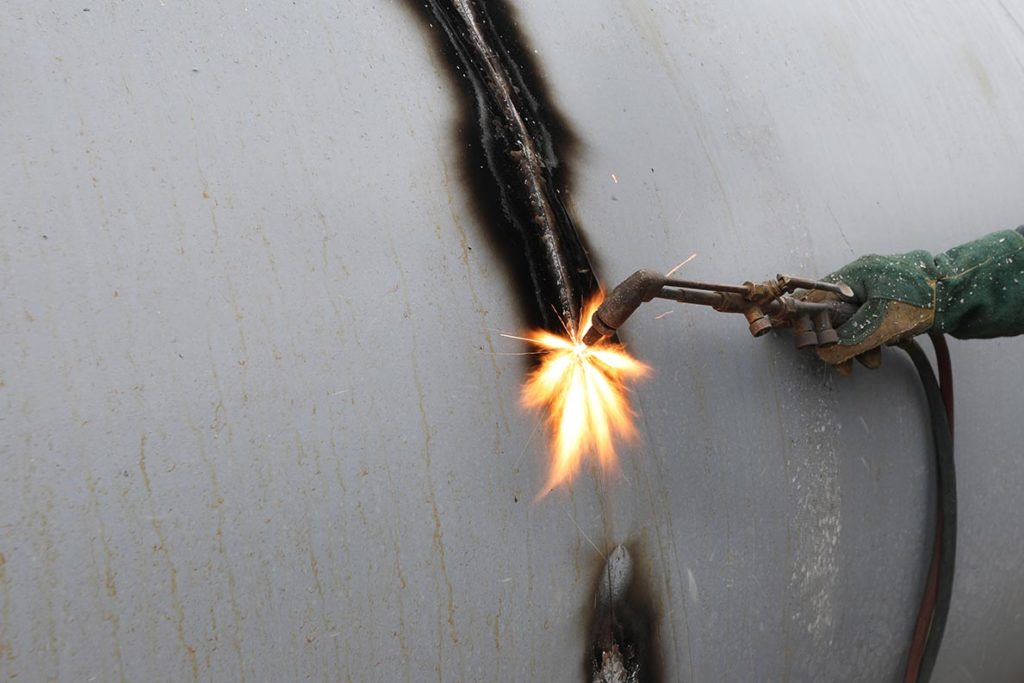
Air Hoses
Air hoses are another essential to doing welding work in a shop. They provide the pressure necessary for pneumatic (air) tools to function. Die grinders, needle guns, angle grinders, and impact guns are all things that utilize air hoses.
Air hoses attach to the manifold and to pneumatic tools with a different fitting than gas and oxygen hoses. Whereas gas and oxygen have a hex-style head that can be tightened with your average crescent wrench, air hoses have a male-female style coupling. The female end has a fitting that recedes to allow the male end to couple. Once they are together you can let go of the receding fitting.
Air hoses often are red, but they can be yellow, black, or blue as well. The reason why the color is not as big of an issue with air hoses is because of the unique fitting. It’s not possible to confuse them with other types of hoses.
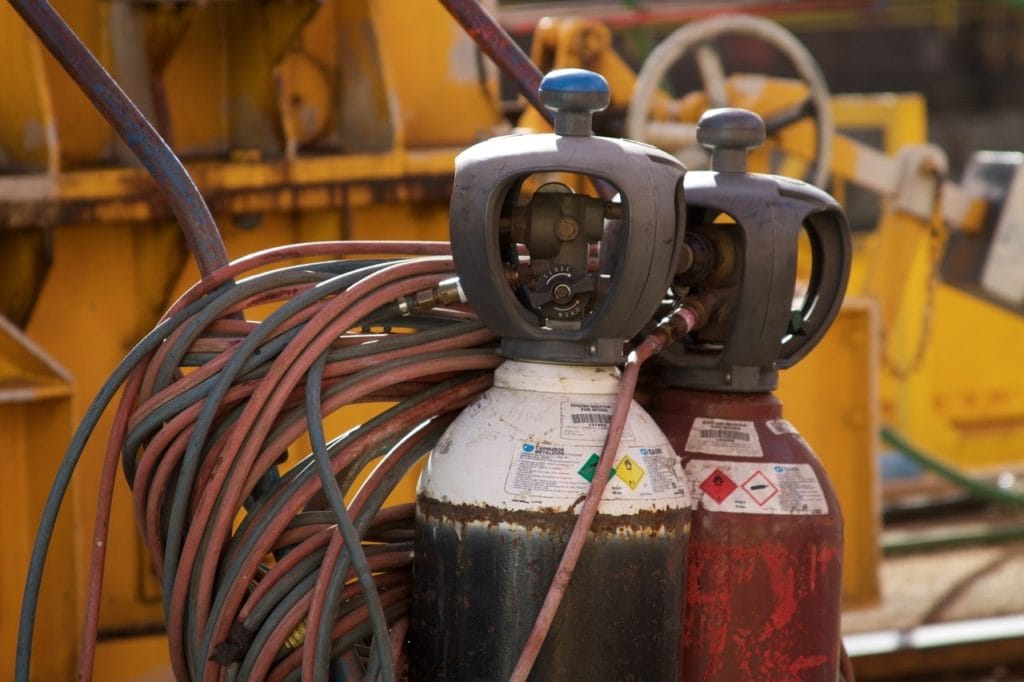
Maintenance
Maintenance of gas hoses, especially flammable gases, is most important for safety in a shop environment. While ragged hoses leaking compressed air can pose a safety hazard, it usually less serious than acetylene leaking into an area where welding is being done. Here’s how to locate and fix a leak in a hose.
Pressure Drop Test
A drop test is when an oxyfuel system is tested for leaks. To perform a drop test first ensure that all connections and regulators are tight and secure (be sure the torch is connected too). Secondly, with the regulator valves closed and standing to the side of the regulator, open the valves of the cylinders slowly (no more than about a half turn for fuel).
Next, set the regulator valves to the proper pressure for oxygen and the gas that you are using. Then, close the valves of the cylinders and wait a few minutes. Go back and look at the regulators. If your pressure has dropped, it means somewhere in your setup you have a leak.
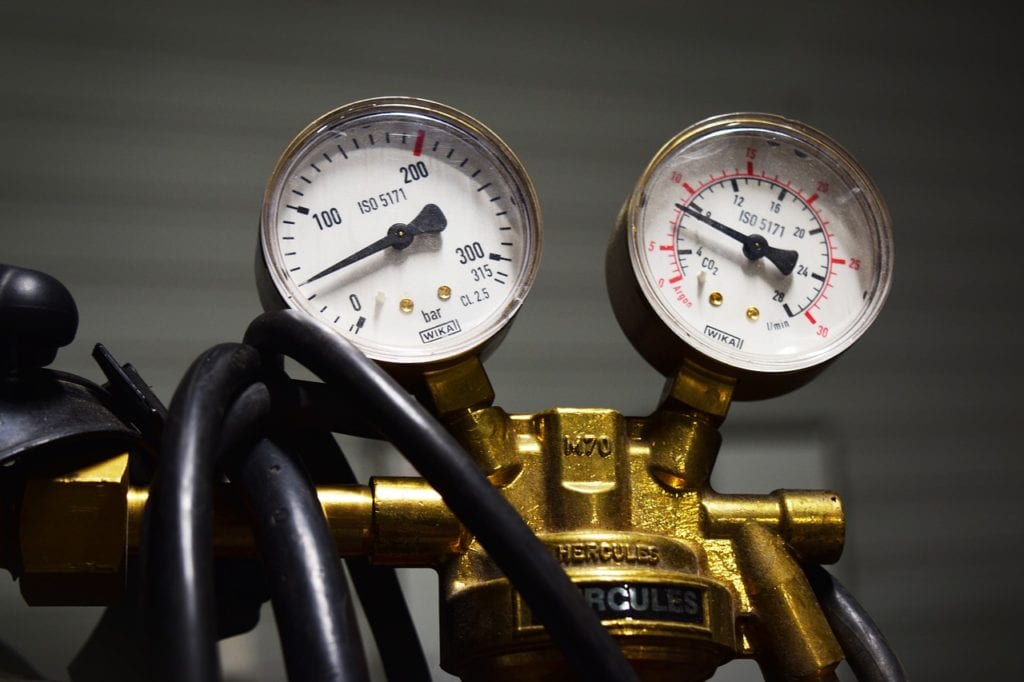
Finding the Leak
Once you have determined that you have a leak, start looking for obvious signs of its whereabouts. This includes the smell of fuel, sounds of oxygen or gas being released, dust being blown around, etc. If you see no obvious signals, ensure once again that all of your fittings are tightened.
If you still can’t find the leak, take a spray bottle of soapy water and spray down the entire system. This will make it evident where your leak is since it will start bubbling at the location.
Repairing the Leak
Most of the time you have a leak, you can temporarily fix it with tape designated for gas hoses. There are also hose repair kits that you can pick up at your local welding supply store. It may require splicing the hose and applying new fittings, all things that these kits are equipped to do.
Air Hoses
A leak in an air hose will be much more obvious since the pressure coming from a compressed air manifold is much higher. This is because you need enough pressure to make sure that your air tools have enough power to do the job right. A simple puncture in an air hose can cause it to flap around on the ground and is generally loud.
Hose Safety
Since hoses are connected to manifolds that can really pack a punch as far as pressure, and often that pressure can be flammable, it is of the utmost importance that you exercise caution when working with air and gas hoses. Here are some general safety rules when working with hoses.
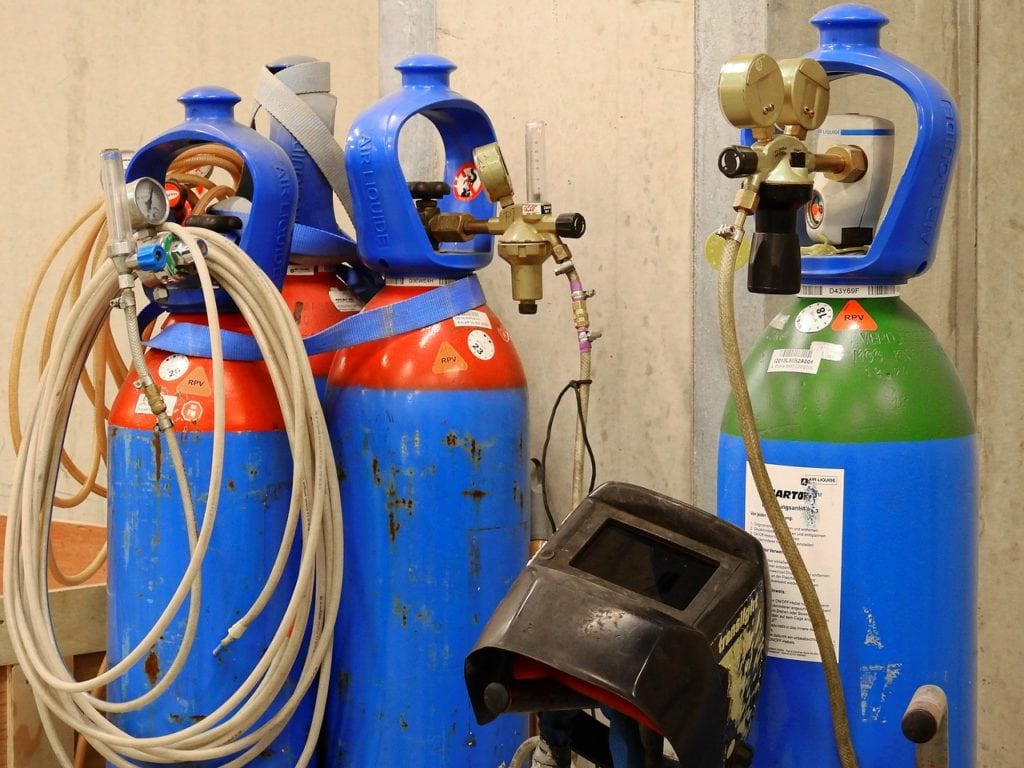
Never Use Gloves with Gas Hoses
You might be thinking, “What’s the harm in getting a little more leverage and grip?” The issue is not the glove itself but that work gloves are prone to getting soiled with grease, dirt, and other contaminants that are accidental fuel for an oxyfuel system. Always tighten fittings clean, bare hands, and with a crescent wrench.
Always Turn Off Valves When Repairing
If you are introducing things into your gas and oxygen lines such as wet epoxy, as might be included in a hose repair kit, you do not want the gas to be able to mix with the uncured epoxy. It may seem obvious to keep the valves off when moving gas lines to a different part of the manifold, doing repairs, etc., but you might be surprised at how often this is disregarded. When working with a tight production schedule, people often take shortcuts even if it can jeopardize their own safety and the safety of others.
Disconnect Air Hoses
It’s not just gas and oxygen hoses that need to be disconnected or have their valves turned off. Compressed air, while not necessarily flammable like propane or acetylene, can be dangerous. This is especially true if you have a loose fitting that connects two sections of hose. Sometimes the coupling will not close all the way and the hose can flap around. Depending on the size of the hose, this can cause serious personal injury. It’s better to turn off the valve at the compressed air manifold first.
- See also: What is a Keyhole in Welding?
Final Thoughts
You can’t determine everything about a welding hose based on its color. While the color can be helpful to determine whether it’s a gas line or oxygen line, it depends upon the context in which it is used. Part of this is due to the fact that the colors of hoses are not necessarily regulated. Above all, it’s important to be attentive to your work area, keeping your leads and lines straight and free of debris, so that you can prevent any unnecessary damages.
Featured Image Credit: renjelharvey photography, Shutterstock
